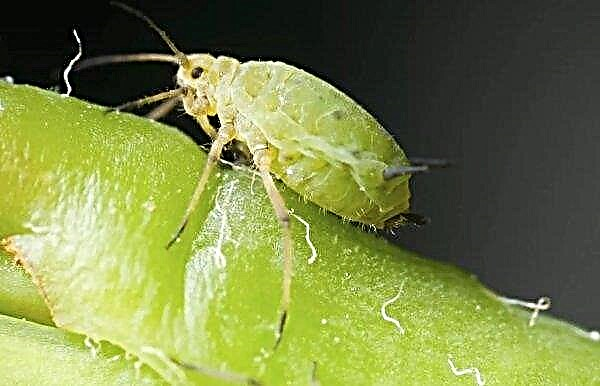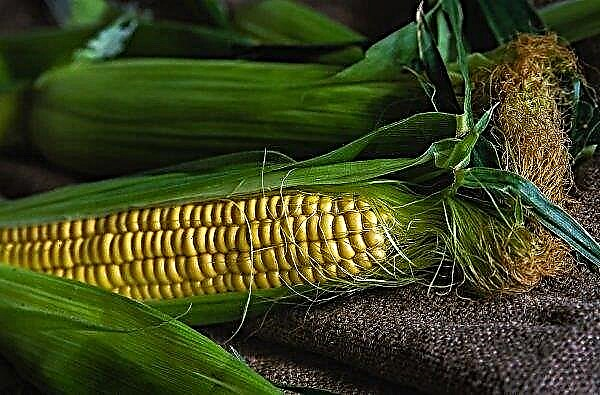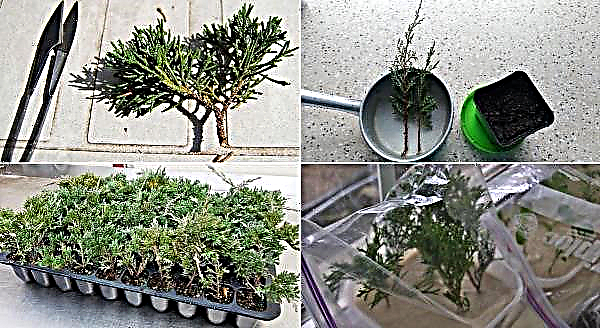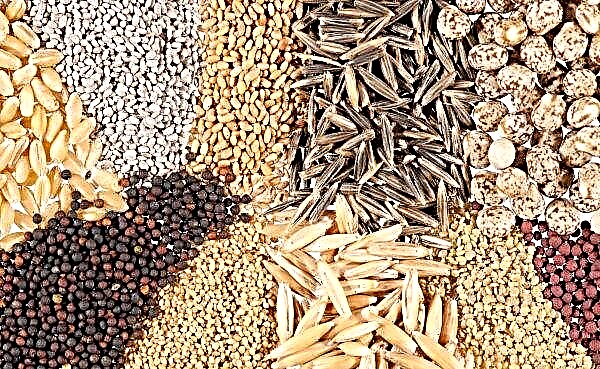In nature, weigel is found in East Asia. This plant fits perfectly into any garden, so it is actively used in landscape design to ennoble the site. Weigela Red Prince varieties were bred in America. It has been adapted to the climate of Russia, which allows you to grow this culture for the design of any personal plots.
Description
Blooming red prince weigel is a medium-growth shrub. The maximum height of the plant is only 1.5 m, and the diameter of the crown is 1 m. The life expectancy of the culture is not more than 30 years. The growth rate is 15 cm in one season.
Important! If you hope that the beautiful flowers on the bushes will last long, then this is an erroneous opinion. Literally after 2-3 weeks, bright inflorescences disappear.
External grade description:
- crown - sprawling, oval;
- shoots - erect, with drooping tops. In young plants, the branches are gray-green in color, and in adults - dark brown;
- opposite leavessmooth and matte. Throughout the growing season (April to September) they are light green, with a central streak of yellow tint. In the fall, the leaf plate turns orange;
- bright flowers, red, up to 6 cm long. They are collected in inflorescences of 5-6 pcs.;
- anthers white tint.
Weigela Red Prince begins to bloom in May. The first inflorescences appear on the tops of last year's shoots. First, large buds appear, and after 14 days, flowers form. Culture blooms several times per season. The first inflorescences, as already mentioned, appear in May, and the next flowering occurs in August.
Frost resistance
As you know, hybrid cultures have low frost resistance. The Red Prince wigel was not an exception. This variety is able to withstand frosts of -28 ° C.. In this case, the structure of the root system and the crown is not disturbed. The disadvantage of this culture is that it is too susceptible to temperature changes in spring. If the temperature regime of day and night changes sharply and greatly, this can provoke freezing of the shoots.
Landing
Weigela Red Prince varieties are unpretentious to growing technology. The plant takes root quickly, so it does not require close attention from the gardener. If you want the culture to please you twice a year with beautiful flowers, then you need to adhere to simple rules for planting. The resistance of the shrub to frost, disease and pests also depends on this.
Did you know? The name "Weigela" was coined in 1780 in honor of the botanist from Germany K. von Weigel.
The timing
First of all, determine the optimal timing for landing. In temperate regions, planting material is planted in spring when the soil warms up to + 6 ° C. Begin planting in late April or early May to protect the plant from sudden changes in temperature. If you plant young seedlings in the fall, they will not have time to take root and will die with the advent of winter.
Begin planting in late April or early May to protect the plant from sudden changes in temperature. If you plant young seedlings in the fall, they will not have time to take root and will die with the advent of winter.
Seat selection
When choosing a seat you need to pay special attention to lighting. Weigela prefers to grow in well-lit areas. This has a positive effect on the quality and duration of flowering. You can also plant the plant next to other plants so that they periodically create a shadow (no more than 2-2.5 hours per day). Planting near tall bushes or trees will protect the flower from strong northerly winds and drafts.
It’s best to land on the southeast slopes of the garden. Weigela prefers to grow on loamy light soils, which contain a lot of nutrients and oxygen. Planting is better on higher ground, because the plant does not tolerate waterlogging of the soil. If in spring, during the melting of snow, all moisture will drain into the lowlands, then the culture may die. The optimum pH of the soil is 6.5.
Soil preparation
Site preparation is carried out in the fall. First you need to dig it, and then make organic fertilizers. It is best to use rotted manure or peat. At least 20 kg of fertilizer is applied per 1 m². After 3 days, carefully water the area so that nutrients penetrate better into the inner layers of the soil. In the spring, a week before planting, it is necessary to prepare a landing hole. Its dimensions should be 50 × 60 cm. Inside, pour a 7-cm layer of drainage using expanded clay or broken brick. Sprinkle the resulting system to collect excess moisture with a nutrient mixture, combining 2 kg of sand, 1 kg of compost and 3 kg of garden soil. The height of the coating from the substrate should be no more than 10 cm. Do not forget about the preparation of planting material. Soak the seedlings in the Kornevina solution (40 g per 5 liters of water) and let stand for about three days. This will stimulate the growth of shrubs, as well as provide better rooting in the ground.
Sprinkle the resulting system to collect excess moisture with a nutrient mixture, combining 2 kg of sand, 1 kg of compost and 3 kg of garden soil. The height of the coating from the substrate should be no more than 10 cm. Do not forget about the preparation of planting material. Soak the seedlings in the Kornevina solution (40 g per 5 liters of water) and let stand for about three days. This will stimulate the growth of shrubs, as well as provide better rooting in the ground.
Landing rules
Planting technology consists of several stages:
- Place planting material in the prepared well.
- Distribute the root system throughout the pit so that the roots do not intertwine.
- Sprinkle the hole with garden soil and carefully compact.
- Pour 10 liters of water into each bush.
- Cover the trunk circle with a 20 cm layer of mulch.
Important! Leave the root neck 3 cm from the surface of the earth so that oxygen can penetrate into the rhizome with its help.
Flower care
Weigela Red Prince varieties are used to decorate the garden. Therefore, everything must be done so that flowering is bright and plentiful. Care of the crop consists of watering, top dressing and pruning. An important stage is preparation for the winter.
Video: Weigela - planting, care and wintering
Watering
Weigela varieties Red Prince has an average drought tolerance, so moderate watering is necessary throughout the growing season of the crop. The root system should not be too waterlogged or be in a constant dry state. If you live in a region where rainfall is extremely rare, you need to water the flower 3 times a week.
Did you know? Gardeners learn the art of bonsai precisely on Weigel. Thanks to the powerful root system, the plant tolerates all stages of formation.
Under each bush, 7-8 liters of water should be consumed. The first watering is carried out during the budding of the bush, the second - in the process of abundant flowering, and the third - at the end of August. If in your region there is a sufficient amount of rainfall, then additional irrigation of the soil is not required.
Top dressing
Young shrubs up to 3 years old do not need feeding. They need only the nutrients that were introduced during the preparation of the soil for planting. Adult plants need to get enough fertilizer. The plant is fed for the first time in early spring (mid-March) using Epin (30 g per each bush). Blooming Weigel should be fed with potassium nitrate (40 g per 1 plant). 2 weeks after the second top dressing, superphosphate (50 g for each shrub) is added. In mid-October, you need to pour wood ash into the trunk circle.
Blooming Weigel should be fed with potassium nitrate (40 g per 1 plant). 2 weeks after the second top dressing, superphosphate (50 g for each shrub) is added. In mid-October, you need to pour wood ash into the trunk circle.
Mulching
The plant must be actively covered with a plentiful layer of mulch. This procedure helps to maintain the optimum level of moisture in the soil, as well as protect the roots from overheating, and decorate the site. The main mulching materials are lapnik, wood sawdust and fallen leaves. The height of the protective layer should be 12-15 cm.
Loosening
The advantage of the Red Prince variety is that weeds do not develop under a low and dense crown. Adult plants can easily tolerate soil compaction, without disturbing the structure of the roots.
Cultivation is carried out only for young bushes.. In the process of developing the root system, it is necessary that a sufficient amount of oxygen enter the soil. Loosening the topsoil (to a depth of 8 cm) is necessary 2-3 days after each irrigation, as well as before applying fertilizers.
Pruning
Due to the fact that the crown of the Red Prince weigel is able to maintain its shape, since the branches do not go beyond the boundaries of the visual framework, the culture does not need to be trimmed. It is necessary in July, after flowering, to cut off the upper part of last year's shoots (15 cm). In the spring you need to carry out sanitary pruning. During this process, dry, diseased and frost-damaged branches are removed.
You should also cut off those shoots that have been broken off from the dense snow cover. Every 2 years anti-aging pruning is performed.. At the same time, all old shoots are removed so that the cut is near the root system. The work is carried out before the sap flow in the kidneys in order to preserve the beauty of the inflorescences.
Video: pruning and preparing for winter
Winter preparations
To prepare for the winter, you need to follow the following steps:
- Carry out water-charging irrigation.
- Spud young bushes.
- Enlarge the mulch layer using needles or straw.
- Collect the stems in a bundle and wrap a strong rope.
- Cover the bush with material that does not allow moisture to pass through.
You need to open the plants in spring when the air temperature is + 4 ° C. This will avoid the development of fungal infections.
Breeding methods
There are several ways to propagate red prince weigels. Most often, gardeners use vegetative methods: cuttings or dividing the bush. Some summer residents prefer to plant crops with seeds. The disadvantage of this generative method is that the seedlings will bloom only after 3 years.
Dividing the bush
The method of dividing the bush is suitable for those plants whose age is at least 5 years. It is necessary to dig up an adult shrub and divide the root system into several parts so that each of them has a fertile kidney.
Next, take turns:
- Plant small seedlings in open ground next to the mother bush and cover with plastic wrap.
- Every day, open it for an hour so that oxygen penetrates inside.
- Water the plants 2 times a week.
- In spring, scoop up young shrubs and transplant to a permanent place.

Cuttings
It is necessary to plant a flower with cuttings after the plants bloom.
For harvesting, use last year's shoots and follow the following procedure:
- Trim the center of the stem so that it is at least 20 cm long.
- Plant the cuttings in nutritious soil (a mixture of sand, humus, garden soil and peat in a ratio of 1: 1: 2: 1).
- Every week, water the seedlings abundantly so that the root system develops. In autumn, the stalk should be rooted.
- After that, it must be insulated for the winter or moved to a warm room.
- In the spring, plant a seedling in a permanent place.
Video: propagation by cuttings
Layering
To get planting material by layering, select an adult plant. Bend last year's shoots to the ground and fix them with a metal bracket. Sprinkle with enough soil. In spring and summer, water the seedlings abundantly (3 times a week), and for the winter period cover with agrofiber. Next year, in early April, a green shoot will form. In the first half of June, it can be transplanted to a permanent place.
Diseases and Pests
Variety Red Prince has a strong immunity against bacterial and fungal infections. But if you plant the plants in the area where the humidity level is high, then root rot may develop (burgundy spots on the rhizome, dry leaves and shoots appear). To treat the disease, you first need to dig up the plant and cut off all the affected areas of the roots. To disinfect a section with charcoal.
After that, you need to treat the soil with a solution of Bordeaux liquid (20 g per 10 liters of water), distributing the entire volume to 1 m². From pests, aphids, ants and a bear can infect a culture. Against the first two, use a solution of "Celtan" (30 g per 8 liters of water). To protect against the second use "Aktaru" (50 g per 10 liters of water). Spraying is carried out 2 times a month.
Use in landscape design
Weigela Red Prince varieties are actively used in landscape design. Thanks to the cultivation of such a plant, you will always be convinced that at the end of spring the garden will be transformed and rich in bright colors.
Culture planted in the following ways:
- in the central part of the flower bed as a tapeworm;
- next to conifers and perennial shrubs;
- at the edge of the park to give aesthetics;
- in rockeries as a color accent;
- for decorative design of lawns and flower beds;
- as a hedge.
So, now you know that there are no difficulties in growing weigels. If you plant correctly and ensure timely care, then the plant will bloom and delight the gardener with brightness every year, transforming the garden plot.












